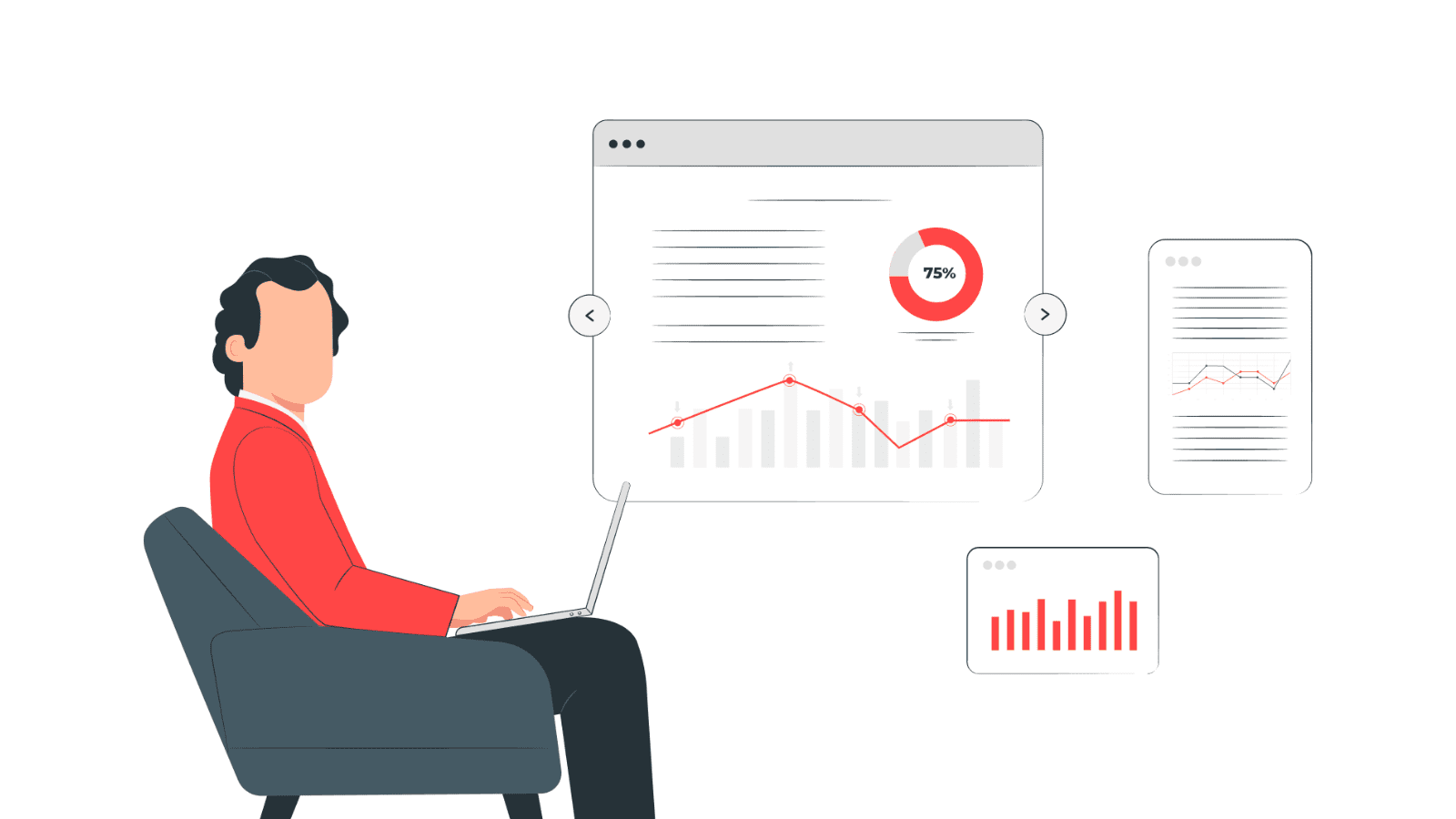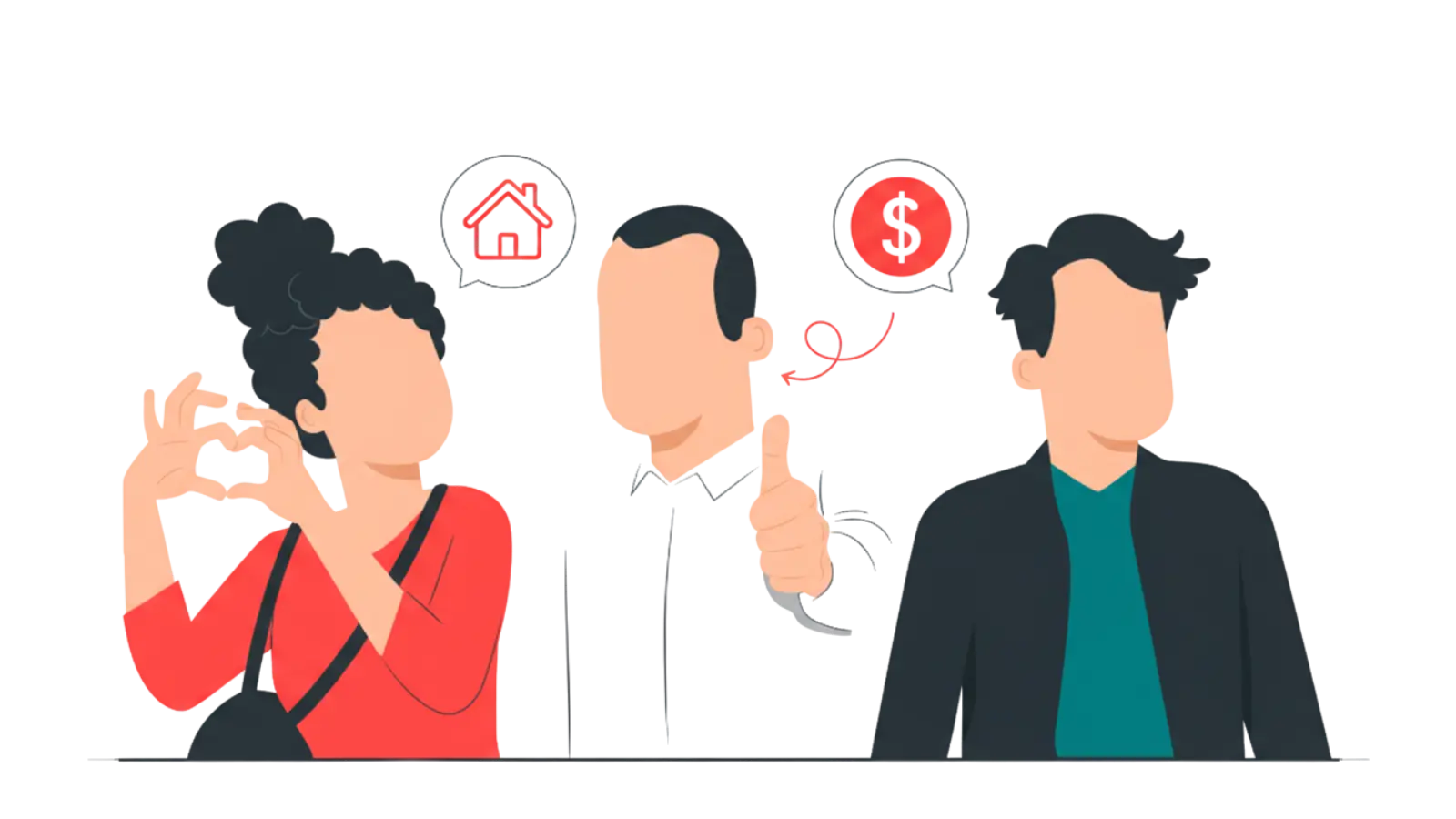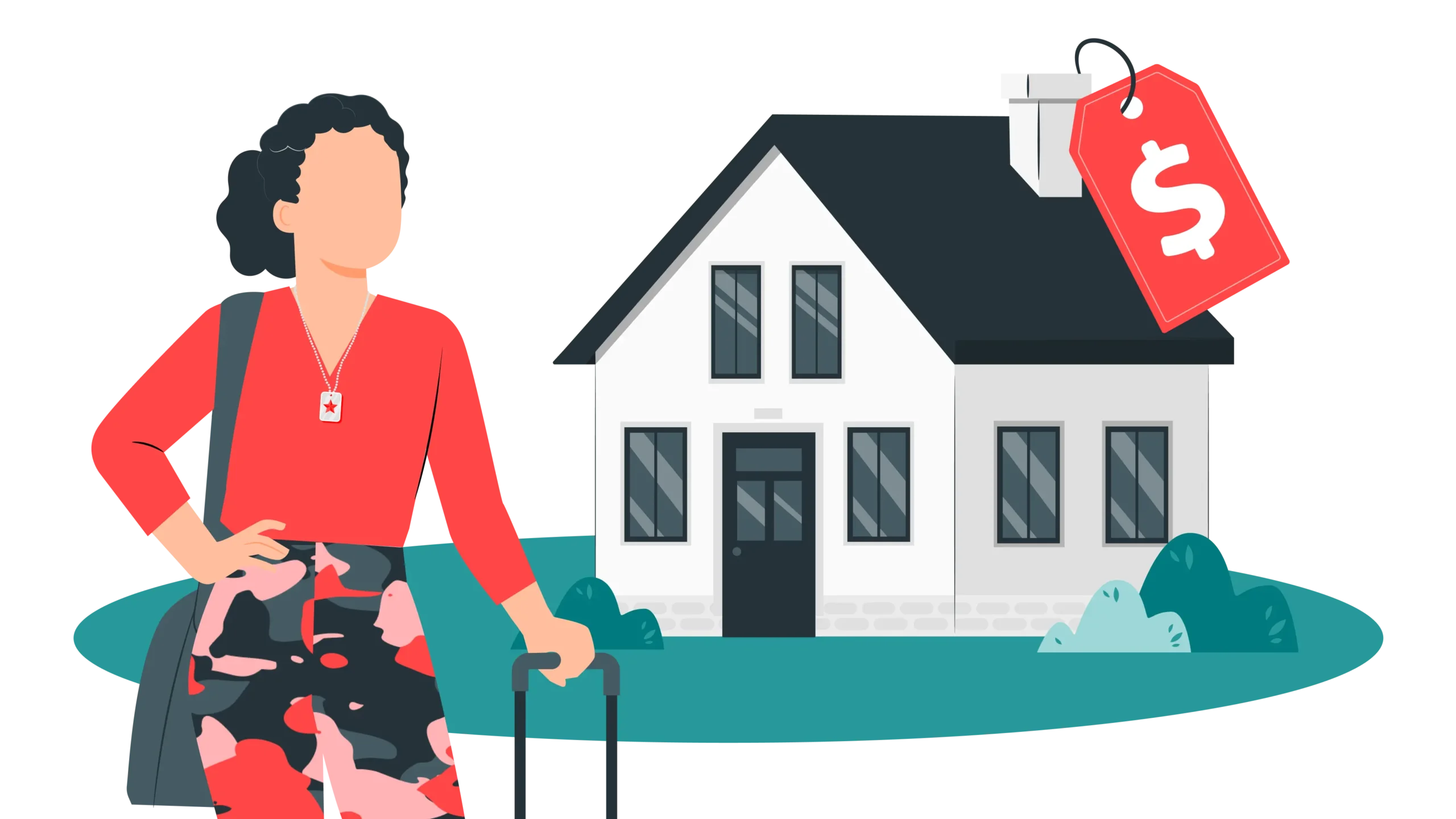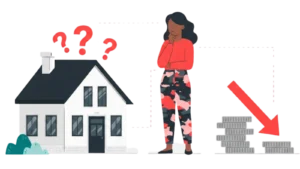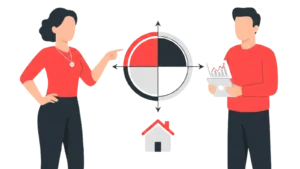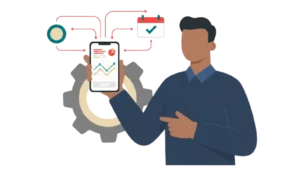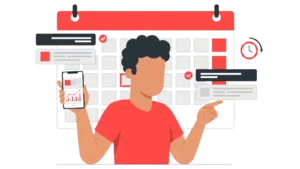Updated : Jul 15, 2025
Hosting an accessible Airbnb serves guests with visible disabilities, welcomes seniors with mobility limitations, parents with strollers, and travelers recovering from injuries. In this article, we’ll walk you through everything from the basics of making a property wheelchair friendly to the granular steps you can take to enhance guest experience.
While we take you through everything, we’ve also created a quick checklist for you to review and upgrade your listing to make your Airbnb wheelchair accessible.
Download our free checklist to make your Airbnb accessibile.
Easily upgrade your current listing to an accessible Airbnb property to ensure that every person feels welcome and is comfortable in your property.
Download Our FREE Checklist NOWWhy Airbnb Accessibility Is Necessary
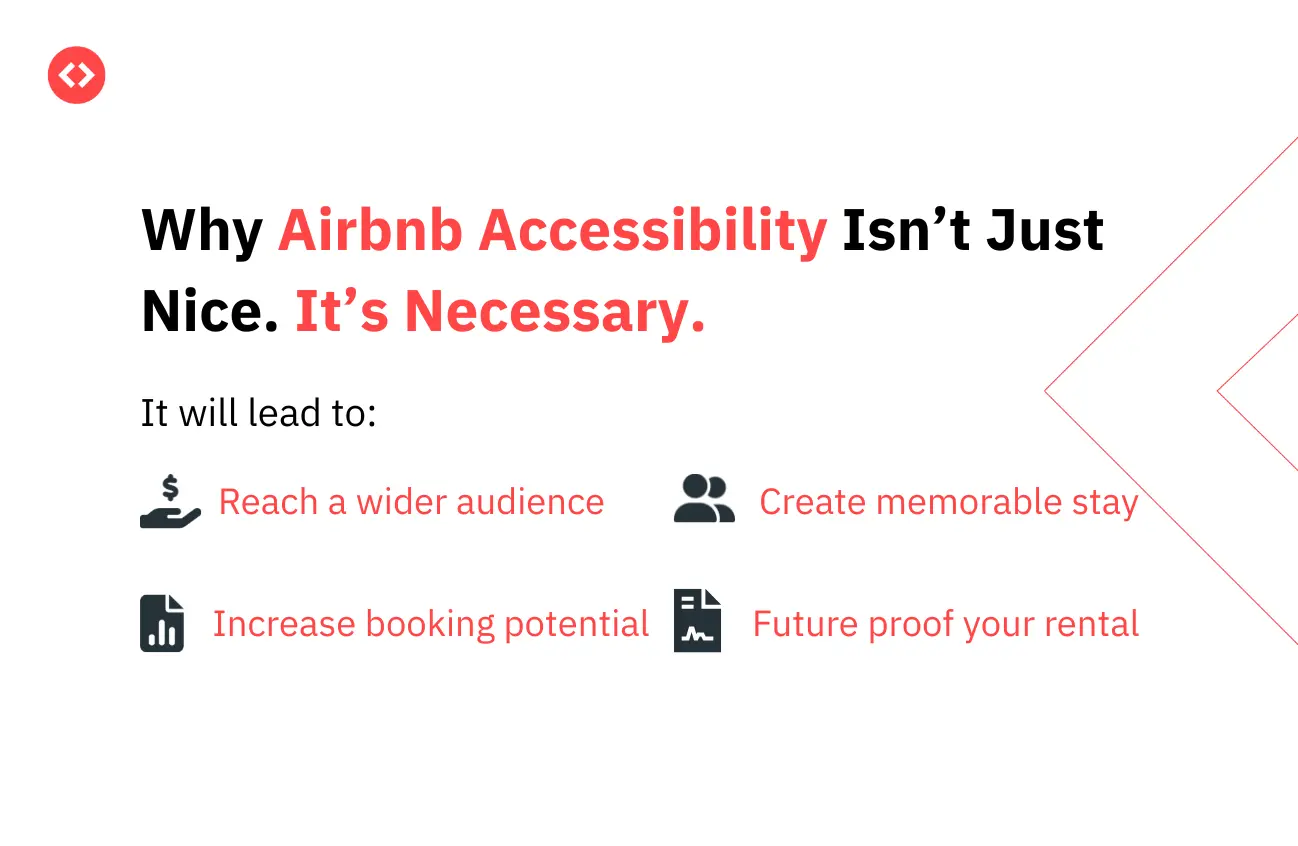
- Reach a wider audience: According to the World Health Organization, over 16% of the global population lives with some form of disability. Many of these individuals are eager to travel but face barriers due to a lack of accessible accommodation.
- Increase booking potential: Wheelchair accessible Airbnbs are in high demand and short supply. A few thoughtful upgrades can help you stand out in search results and appeal to an underserved but loyal guest base.
- Futureproof your rental: Accessibility upgrades aren’t a trend; they’re the future of travel. Making your listing inclusive today ensures long-term relevance as regulations and traveler expectations evolve.
- Create memorable stays: Hosting is about making people feel at home. Guests with disabilities often face challenges just to reach a destination. Providing a space that works for them can turn a good trip into an unforgettable one.
What Makes a Wheelchair Accessible Airbnb?
It’s easy to assume that removing a few obstacles makes your Airbnb wheelchair accessible, but true accessibility goes deeper. The key principle? Independence. Guests should be able to navigate, use, and enjoy your space without needing assistance at every turn.
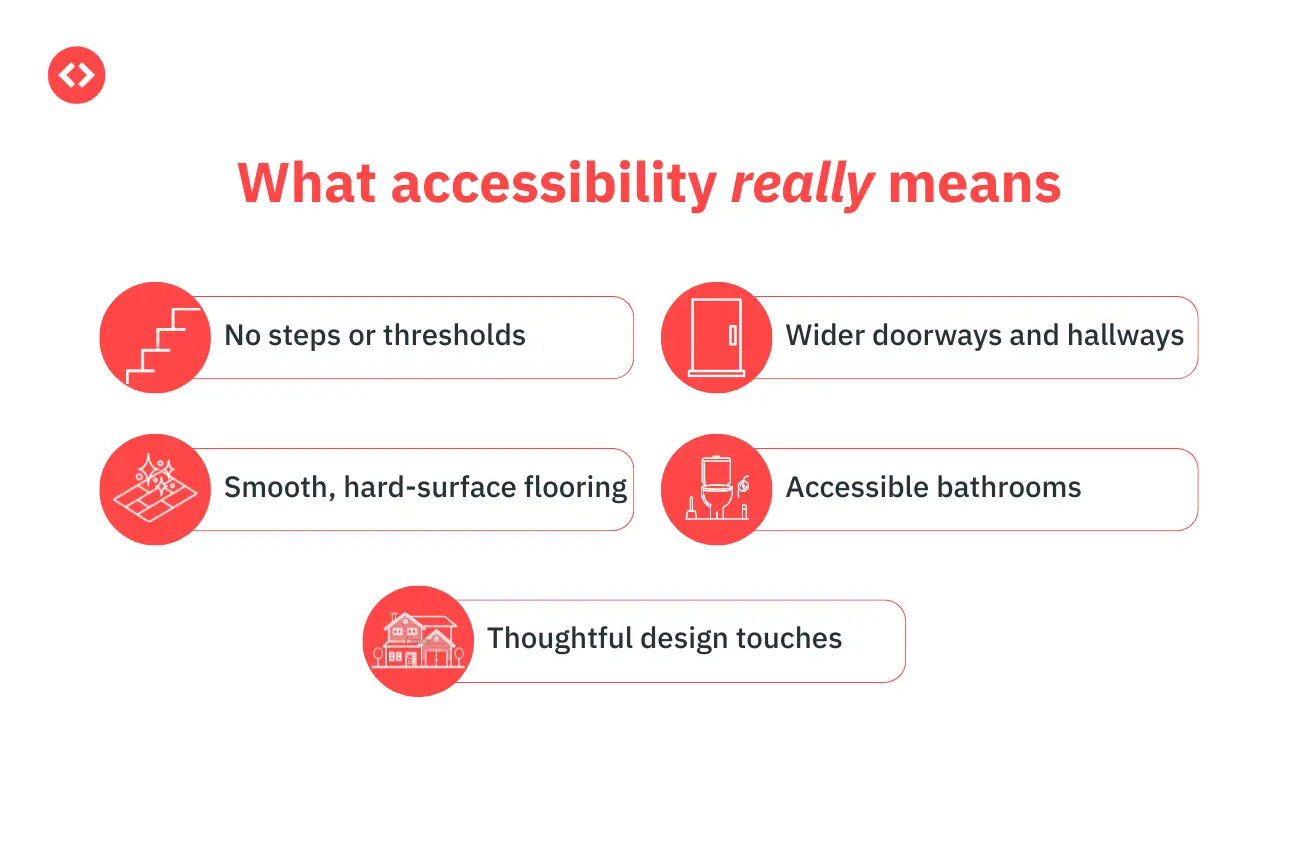
Here’s what accessibility really means:
- No steps or thresholds at the entry, throughout the home, and in bathrooms
- Wider doorways and hallways (minimum 32 inches wide)
- Smooth, hard-surface flooring that doesn’t snag wheels or pose a trip hazard
- Accessible bathrooms with roll-in showers, sturdy grab bars, and raised toilets
- Thoughtful design touches like lowered counters, reachable light switches, and lever-style handles.
Accessibility isn’t about sacrificing style—it’s about integrating thoughtful design choices that benefit everyone.
Airbnb’s Accessibility Filters: What You Need to Know
Airbnb allows travelers to search for properties based on 13 specific accessibility features. These are visible filters that users can apply while browsing listings. Hosts who provide accurate information and images for these features are more likely to show up in relevant searches.
Airbnb’s 13 Accessibility Features:
- Step-free entrance
- Path to the entrance without stairs or steps
- Entrance wider than 32 inches
- Hallways at least 36 inches wide
- Accessible parking spot
- Step-free path to the bedroom
- Bedroom entrance wider than 32 inches
- Step-free path to the bathroom
- Bathroom entrance wider than 32 inches
- Grab bars in the shower or tub
- Roll-in shower
- Shower bench
- Raised toilet with grab bars
If you can offer even a few of these, make sure you showcase them clearly on your listing. Photos matter—include close-ups and demonstrate how a wheelchair or walker would fit in the space.
Room-by-Room Guide: Making Your Airbnb Wheelchair Accessible
Stay Ahead of the Market and Find the Right Amenities that Your Potential Guests Want Using PriceLabs Market Dashboard.
Use PriceLabs Market Dashboard and Neighborhood Data to track competitor pricing and demand shifts and analyze past performance to set a strong pricing strategy for your property.
Create your Market Dashboard Now1. Entrance & Parking
First impressions matter. If a guest struggles to enter your home, the rest of the amenities won’t matter.
- Create a clear, step-free route from the street or driveway to your front door.
- If steps are unavoidable, consider installing a removable or modular ramp.
- Use outdoor lighting and motion-sensor lamps to aid visibility at night.
- Clearly mark the accessible parking spot, ideally as close to the entrance as possible.
2. Living Room
Comfort and mobility go hand-in-hand here.
- Rearrange furniture to allow at least 36 inches of clearance for wheelchairs.
- Remove unnecessary rugs or secure them to prevent slipping or tripping.
- Install reachable light switches (no higher than 48 inches).
- Choose a coffee table with rounded corners to reduce injury risk.
3. Kitchen
Not every host can remodel their kitchen, but small tweaks go a long way.
- Ensure frequently used items are stored within arm’s reach—no higher than 48 inches and no lower than 15 inches.
- Use appliances with front-facing knobs and controls.
- Consider adding a fold-down prep surface or clearing under-counter space for wheelchair access.
- Label pantry contents or provide a visual guide for organization.
4. Bedroom
Your guest’s day begins and ends here, so prioritize ease of movement.
- Allow at least 36 inches of clearance around the bed.
- Choose a bed height of 20–22 inches—low enough to sit on, but high enough for easy transfers.
- Use firm mattresses and provide extra pillows or a wedge for added comfort.
- Add reachable outlets and reading lamps on both sides of the bed.
5. Bathroom
This is often the most challenging space to make accessible—but also the most critical.
- If space allows, install a roll-in shower with a sturdy bench and a handheld shower head.
- Mount grab bars next to the toilet and in the shower at secure points in the wall studs.
- Use a raised toilet seat with arm support.
- Place a non-slip mat or flooring to prevent falls.
- Provide a mirror angled downward or mounted lower for seated guests.
Smart & Simple Accessibility Upgrades
You don’t have to renovate your entire home to make a difference. Try these low-cost, high-impact improvements:
- Portable ramps: Under $100, easy to install and store.
- Smart home devices: Voice-controlled lighting, fans, and locks can be life-changing.
- Keyless entry: Eliminates the challenge of turning keys for guests with limited dexterity.
- Shower chairs and transfer benches: Can be stored and offered on request.
- Motion-activated night lights: Perfect for hallways and bathrooms.
How to Update Accessibility Info on Airbnb
Making changes to your listing is simple, and it ensures the right guests see your efforts:
- Log in to Airbnb and navigate to Listings.
- Choose your listing and scroll to Accessibility Features.
- Select all features that apply.
- Upload clear, well-lit photos of each accessible area.
- Include descriptive captions. Example: “Roll-in shower with built-in bench and grab bars.”
- Save changes and preview your listing to verify accuracy.
Remember: Accessibility isn’t just a checkbox—it’s a trust signal.
Going Beyond the Physical: Inclusive Communication
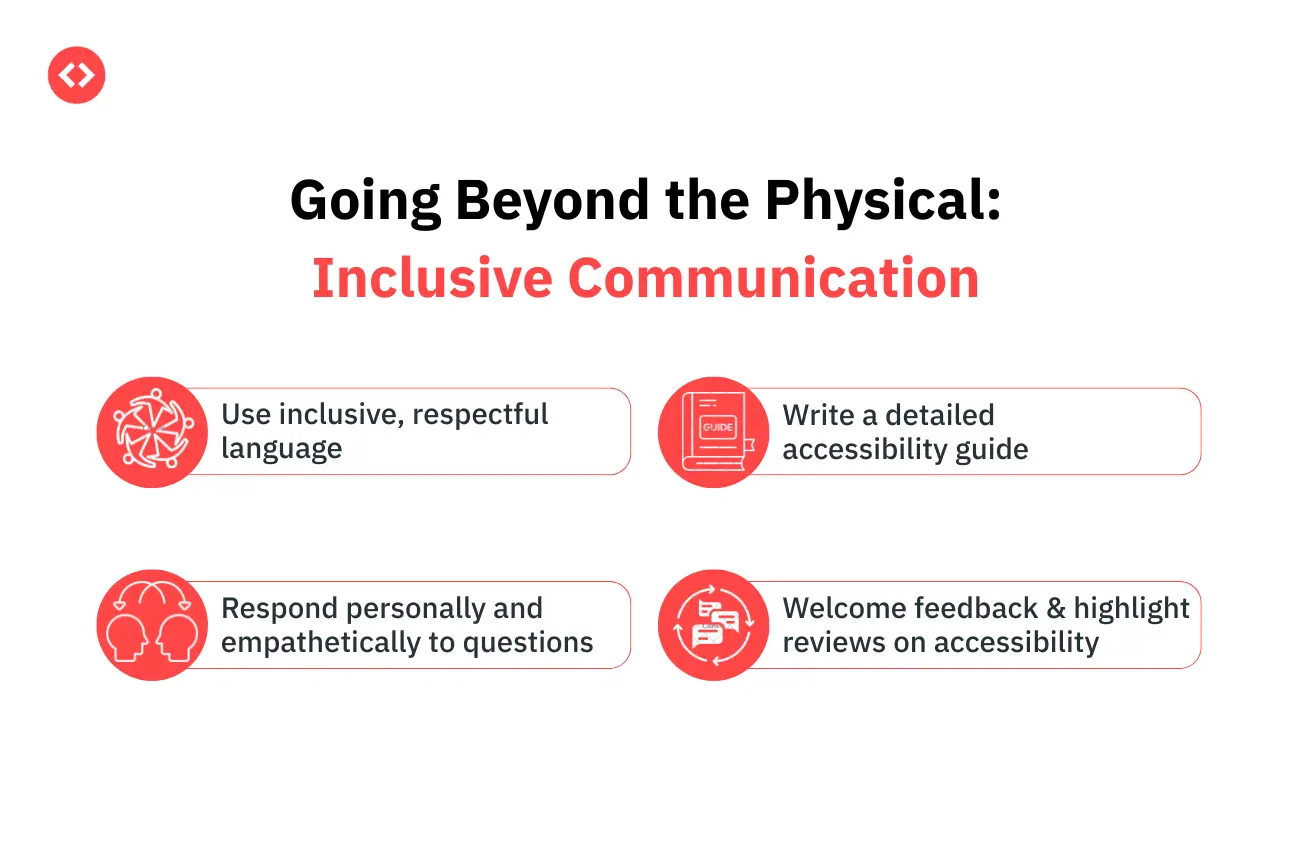
Accessibility goes beyond ramps and widened doors—it’s also about how you communicate with your guests. Inclusive communication ensures that your guests feel seen, heard, and respected long before they arrive.
- Use inclusive, respectful language: Instead of saying “handicapped,” use terms like “accessible,” “mobility-friendly,” or “guests with disabilities.” For example, write: “Our home features an accessible shower with grab bars,” rather than “Our home is suitable for handicapped guests.”
- Write a detailed accessibility guide: Include practical, honest details in your listing’s house manual or welcome book. For instance: “The hallway is 38 inches wide with smooth wooden flooring. The shower entrance is 34 inches with a small lip of 1 inch.” These specific measurements help guests decide if the property suits their needs.
- Respond personally and empathetically to questions: If a guest messages to ask, “Is your shower truly step-free?” don’t just say yes. Respond with a photo and explanation: “Yes, the shower is fully level with the floor. I’ve attached a photo from the side so you can see there’s no curb.”
- Welcome feedback and highlight reviews on accessibility: If a past guest mentions how your grab bars helped them feel secure, feature that review or reference it in your listing description. Example: “Recent guests have appreciated our walk-in shower and adjustable-height bed.”
Why Accessibility and Pricing Go Hand-in-Hand
Provide a Great Experience & Generate 5-Star Reviews with Competitive Prices!
Static pricing hurts your Vrbo listing. Boost occupancy & revenue with PriceLabs’ Dynamic Pricing & Revenue Management tool. Optimize your pricing strategy based on market conditions, seasonality & competition for outstanding guest reviews.
Get Started NowIt’s not just about ramps and rails. An accessible listing can help you:
- Increase the occupancy rate by attracting niche demand
- Justify premium rates through high-value features
- Extend your appeal to business travelers, medical tourists, and older guests
Using a dynamic pricing tool like PriceLabs can help you identify high-demand dates, compare the performance of accessible units in your area, and adjust prices accordingly. You can even segment your market strategy to highlight your accessibility features during peak travel periods or events for medical conventions, senior events, or accessibility conferences.
Final Thoughts: Open Doors, Open Hearts by Making Your Airbnb Wheelchair Accessible.
Making your Airbnb wheelchair accessible isn’t just about widening doorways or installing grab bars—it’s about widening the circle of who gets to belong. Every thoughtful upgrade you make has the power to turn someone’s “maybe” into a “yes.”
Maybe your ramp helps a grandfather attend his grandson’s wedding, your roll-in shower means a traveler recovering from surgery finally takes a vacation, and your detailed response to an accessibility question makes a guest feel seen before they even arrive.
You don’t need to have everything perfect right away. Start small. Be honest. Keep improving. What matters most is the intention behind your hosting—the desire to create a space where everyone feels safe, welcome, and valued.
Because when you open your doors to more people, you’re not just filling your calendar—you’re building a world that’s kinder, more inclusive, and a little more like home.



